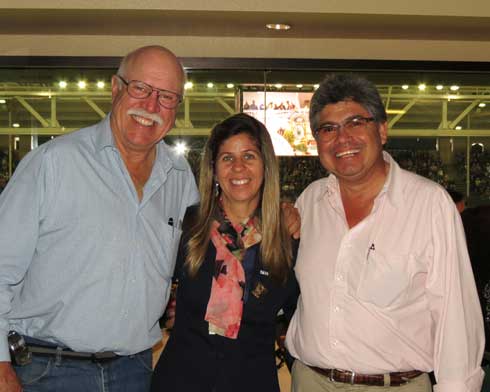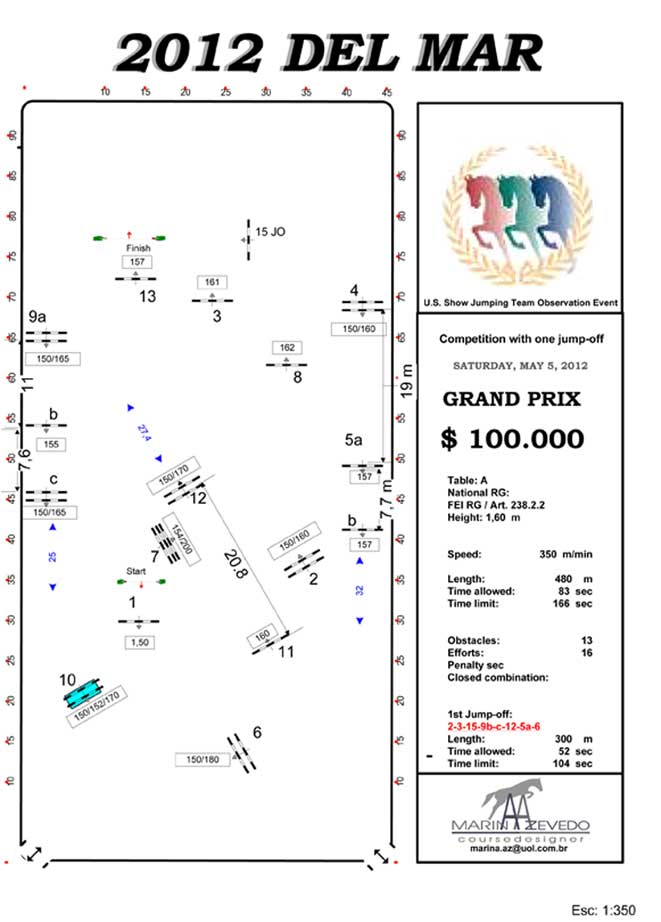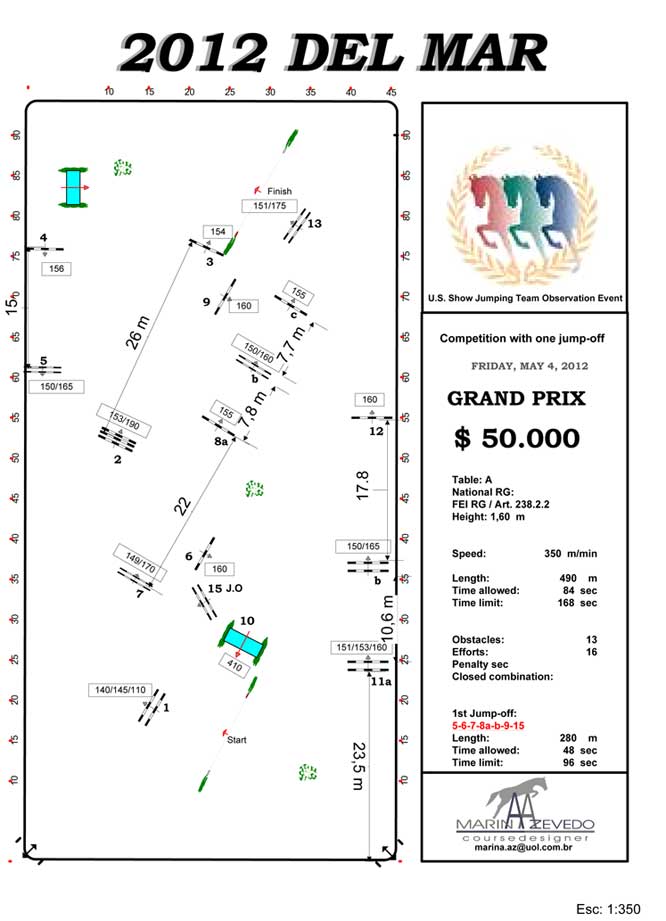On Course with Marina Azevedo
By Staff Report June 18, 2012FEI course designer Marina Azevedo is the brains behind two of the most exciting show jumping tracks of the year―the USEF Olympic observation grand prix at the Del Mar National Horse Show.
The $100,000 Hermés Grand Prix on May 5 and the $50,000 Surfside Grand Prix on May 3 are destined for the record books. Rich Fellers and Flexible won both, going two clean rounds in the first, and with a fast time and a single rail in the second. (Course maps are included at the bottom of the story.)
A rider who competed internationally until 2000, Azevedo spent two years training under Nelson Pessoa in Europe. She went on to train young riders, in her native Brazil and throughout South America. She found her forte in 1998 when her friend Guilherme Jorge requested she help build some courses.
She went on to work with industry luminaries Leopoldo Palacios, Linda Allen, Olaf Peterson, Frank Rothenberger and Arno Gego.
In 2006 she was promoted to FEI Level 3 designer, and went on to work some of the biggest horse shows in the world, including at the World Cup in Las Vegas ,the CSIO Aachen and the World Equestrian Games in Kentucky and the Pan American Games. She has designed Nations Cups, Brazilian Championships, North American Young Rider Championships and courses for HITS Thermal and Saugerties.
Separate from her equestrian pursuits, she studied pedagogy ― the holistic science of education ―and owns a private school.
The Equestrian News asked her to share some thoughts about the courses she designed in Del Mar.
The Equestrian News: What would you say was your big challenge in designing these two courses, which were comprised of two rounds each?
Marina Azevedo: The first observation [designed by Alan Wade] in Wellington was very demanding, so the following ones couldn’t be any different. Del Mar is an indoor competition, and the size of the track is totally different from
Wellington and Kentucky. That’s a relevant point to consider. There was a lot of working on heights and widths. At Del Mar we set a double combination―a double parallel just 20 meters from the corner, which rarely will you find in a big ring. The scope indoors sometimes is harder.
I had the responsibility of helping to identify the best collection of riders of the moment, and to prepare them to continue growing. At the same time you don’t want to use big tricks, or ask impossible questions that could cause accidents.
I believe that my designing style is a classic one, which you can see in that there was not just a single spot that caused difficulties. At Del Mar, the mistakes were well distributed.
These were the results for the Hermes Grand Prix:
Fence 1 (3x)
Fence 2 (3x)
Fence 3 (1x)
Fence 4 (1x)
Fence 5a (2x)
Fence 5b (6x)
Fence 6 (3x)
Fence 7 (1x)
Fence 8 (1 refusal)
Fence 9a (1x)
Fence 9b (2x)
Fence 9c (1x)
Fence 10 (6x)
Fence 11 (4x)
Fence 12 (6x)
Fence 13 (4x)
I had great help from Leopoldo Palácios, who was my T.D. [technical delegate] and his experience was calming. Robert Ridland, who is the incoming chef d’equipe of the U.S. show jumping team, was there too, which was excellent. He is a former course designer.
Drawing such an important competition was a great experience. Many aspects had to be analyzed and it made me work hard, planning for many hours. The result was very fulfilling.
TEN: How did the first course, on Thursday, progress to the second, on Saturday?
Azevedo: The first competition was designed to prepare everyone for the big test on Saturday, which required more scope. The difficulty increased little by little, which helped greatly on the results.
I believe that as a course designer we help the rider and the horses jump better if we do our job well, so we have to give than a chance to know our job, and we know their work too―how they are going that week, and the fact that they work with animals that are different day to day.
TEN: The second element of the Hermés double, 5b, came down a lot, and was the one rail Rich Fellers and Flexible dropped.
Azevedo: Since this was a selection trial for the Olympic games, and indoors, we had to be cautiously strict without being exaggerated. This line, from a single to the double vertical Hermes, was 19 meters, which can be done in four- or five strides. However the chance to pass cleanly through with four strides is more difficult. Furthermore, to do five strides the rider has to have absolute control of the horse, so the last stride wouldn’t be too short.
TEN: And then only one stride between the two elements, which seems incredibly difficult ―to have your horse land so perfectly that he can bounce right out of there. Have you ever designed courses of this caliber before?
Azevedo: I’ve done Olympic observation classes in many countries, but I believe this one at Del Mar was the most demanding. We got about the number of riders we expected, and there was a smaller number on Saturday than Thursday. Thirty passed the vet inspection, but we knew that not all of them would make it to the ring. Several riders had informed us about that ahead of time.
TEN: What is your next course assignment?
Azevedo: I’ll be working in Venezuela, and after that on to Saugerties to work with HITS, then one in Colorado and one in Kentucky. That will keep me busy through July.
Short URL: https://theequestriannews.com/?p=10774





